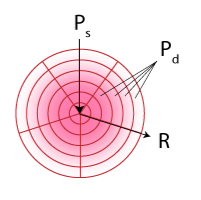- GENERIC STANDARD
- SAMPLE DOCUMENTS
The Decibel (dB) as a Unit – Part 2
Why are units expressed in dB in EMC?
The levels of output vary largely so it is quite common to see changes of a few fold or an order of magnitude. So if the output increases by a factor of four from 27 microvolts to 108 microvolts, it has increased by 20 log 4 = 12.041 dB. In practice, if it has gone up from 26 microvolts to 107 microvolts, how significant would we consider the change? It is calculated to be about the same or 20 log (107/26) or 12.288 dB. In EMC measurements, generally, we consider a 1 dB change as insignificant.
CISPR 32 Emissions Limit:
So how small are the power levels that we’re dealing with that can cause emissions problems? It would be interesting to consider the levels specified by CISPR 32 for multimedia equipment. According to CISPR 32, the limit is 40 dBuV/m from 30-230 MHz and 47 dBuV/m from 230-1000 MHz when making measurements at 10 meters for class A commercial environment, or 3 meters for class B residential environment. This corresponds to a level of 100 microvolts per meter of electric field strength at say 100 MHz.
since, power density is given by
PD = E2/ Z
where Z is the wave impedance (120π) for free space, and E is V/m we get,
PD = 100-6 x 100-6 / 120π = 10-9/377 = 26.5-12W/m2
so, we can approximate the source power needed to create this power density at any given distance?

at 10 meters,
26.5-12 x 4 x 3.14 x 100 = 33 nW
and for 3 meters,
26.5-12 x 4 x 3.14 x 9 = 3 nW
That is an amazingly small amount of power! To put this in perspective, a typical mechanical wrist watch can run for about 2 years on a single 1.55V, 50mAh battery. The energy in that battery, 77.5mWh, would equate to the watch consuming a constant 4.5uW of power over two years, a very small amount, but that’s still over 1000 times the power needed to produce a field of 100 uV/m at 3 meters. In this example of the watch, we are talking about direct current from the battery, so the watch would never be a radiating source, we just use this as frame of reference for the power level comparison.
FCC Emissions Limit:
When a limit is not expressed in terms of a dB value, it could be helpful to convert such a limit so that it can be directly compared to other limits that are expressed in dB, as well as making it easier to compare readings in dB directly to the limit. It would be interesting to consider the limits specified by the FCC for residential unintentional radiators like our digital devices. According to Part 15 of CFR 47, the limit is 100uV/m from 30-88 MHz, 150uV/m from 88-216 MHz, 200uV/m from 216-960 MHz and 500uV/m above 960MHz. That gives the following 3 meter limits and their approximate respective source powers;
What does this table tell us? Small changes in dB equate to much large changes in power and voltage. In this case, there is a 5x increase in the voltage and 25x in power over the range of limits. The table also shows that CISPR and FCC limits can differ quite a bit and knowing this can be useful when testing.
The reason these limits are so? Even such a low power, unintentionally radiated into the air from many sources increases the background radio noise and can cause interference in radio reception. In another application note, we will compare this power to typical power of the circuit such as an oscillator. That may shine light on why noise suppression seems so difficult.